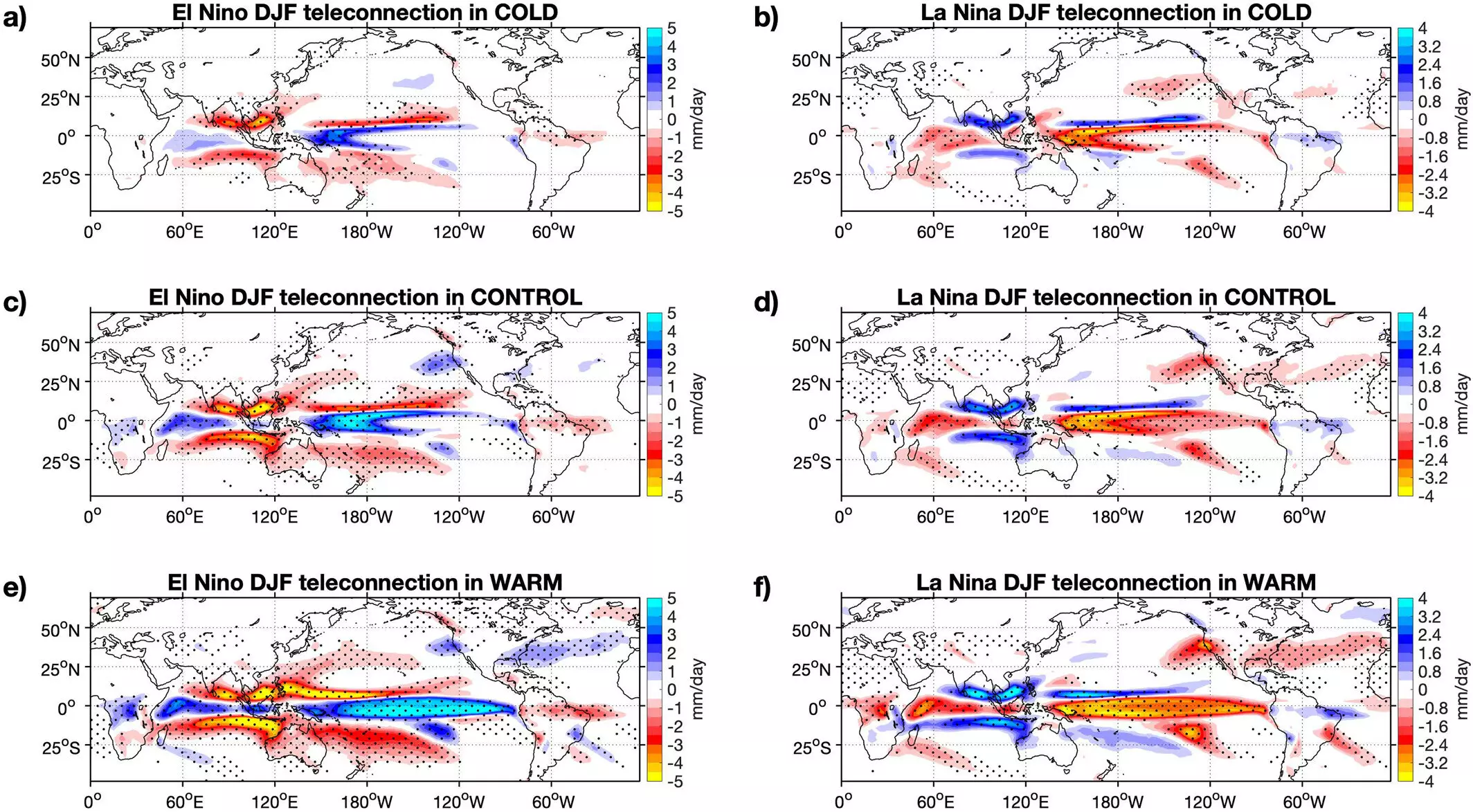Recent research conducted by a group of physicists and oceanologists from various institutes in Germany has shed light on a concerning prediction regarding the future of El Niño-Southern Oscillation (ENSO) events. The team, consisting of Tobias Bayr, Stephanie Fiedler, and Joke Lübbecke, utilized the CESM1 climate model to explore the impacts of current emissions on the occurrence of extreme El Niño events in the coming decades.
The El Niño-Southern Oscillation is a climatic phenomenon characterized by the release of heat from specific ocean regions into the atmosphere, resulting in diverse weather patterns globally. The researchers observed a troubling trend of increasingly severe ENSO events in recent years, raising concerns about the frequency and intensity of such occurrences in the future.
With the link between rising global temperatures and extreme weather events becoming more apparent, the scientists sought to simulate the potential outcomes of continued temperature increases on ENSO events using the CESM1 model. The current projections estimate a temperature rise of 2.9°C by 2100 if greenhouse gas emissions remain unchecked, with the likelihood of reaching a critical tipping point at 3.7°C.
The findings from the climate model simulations paint a grim picture of the future, suggesting that surpassing the tipping point could lead to a drastic increase in the occurrence of extreme ENSO events. Not only would such events become more frequent, potentially happening every four years, but they would also have far-reaching impacts on global weather patterns.
The researchers emphasize that even if efforts to mitigate climate change were successful, the consequences of reaching a tipping point for ENSO events would persist for centuries. The normalization of weather patterns to pre-tipping point conditions would be a slow and arduous process, underscoring the urgent need for immediate action to prevent such a scenario from unfolding.
Beyond the increased frequency of extreme ENSO events, the climate model simulations also forecast significant shifts in weather patterns, such as the Gulf Stream moving southward. These changes would result in drier conditions in northern regions of North America, including Canada, and heightened precipitation in southern parts of the United States.
The research conducted by the team of physicists and oceanologists highlights the critical importance of addressing climate change to avert a looming crisis in the form of extreme El Niño events. The implications of reaching a tipping point for ENSO events extend far beyond immediate weather disruptions, emphasizing the need for global cooperation and decisive action to mitigate the impacts of climate change on a planetary scale.



Leave a Reply